This guidance has been produced in consultation with SecureBio, the contracted 91�ȱ� CBRN consultants. It does not preclude the requirement to complete a separate detailed risk assessment for coverage of a known CBRN incident.
It may be necessary to visit the areas where leaks and chemical spills have taken place; this may be from tankers or containers that have spilled their load or from fixed locations such as power plants. It may also be necessary to visit sites where there has been an outbreak of such diseases as bird or swine flu, a terrorist attack where a dirty bomb was used or be on a battlefield where CRB weapons have been used.
Typical examples of production activities include, but are not limited to, recording general views (GVs), interviews with people involved, including the emergency service personnel and incident control officers, and vox pops. This guidance does not cover work on or with the spilled substance, including helping with clean-up activities e.g. beach clean ups after oil spills.
What Can Go Wrong?
- Exposure to fumes/ vapours causing ill health, coma or death
- Exposure to dusts causing ill health, eye damage, or death.
- Exposure to substances causing skin irritation or burns etc.
- Accidental inhalation, ingestion, or absorption etc. into the body may cause ill health or death.
- Exposure to biological materials either from waste or deliberate release i.e. through terrorism.
- Exposure to substances that may damage fertility or the foetus i.e. radiation.
- There may be an explosion resulting from flammable materials or fumes
- Exposure to oxygen enriched / depleted atmospheres i.e. confined spaces such as boilers, sewers, tunnels etc.
- Oxygen enriched atmospheres (above 23%) are highly explosive.
- Depleted oxygen atmospheres (below 19%) will begin to cause health problems and can cause death.
- Personnel could be struck by vehicles while on the road, lay-by or hard shoulder.
Legal/91�ȱ� Requirements
General requirements
- This guide provides important background and information to inform your planning, assessment and arrangements. Reading it does not make you an expert, nor preclude the need for separate risk assessment. If you require any additional information or clarification you should always contact the Safety Advice Line or High Risk team, as appropriate.
The right to refuse
- Staff may decline an assignment and have the right to withdraw if they are concerned for their own health and safety or the health and safety of those affected by their work.
Control Measures
General Controls
- Obtain as much information as possible beforehand with regard to the nature of the substances involved. Try and identify the agents e.g. from person in charge, containers, markings on tankers etc. without taking risks. Remember assess before acting, do not rush into any situation.
- Use experienced and appropriately trained staff when dealing with such incidents.
- Any incident involving bombs/IED’s should be considered to have the potential to be a CBR attack and should be treated as such until the emergency services confirm otherwise. (This is the approach the UK police will follow)
- Plan position to minimise teams exposure e.g. from an upwind vantage point at safe distance.
- Park vehicles safely in relation to incident and wind direction.
- Observe any cordons/ exclusion zone boundaries.
- Get expert advice where needed from 91�ȱ� Safety Advisers and/or the High Risk Team.
- Determine wind direction and approach upwind from the potential site of spills/leaks/incident. Be aware of changes in wind direction and be prepared to pull out of an area immediately should the wind change compromise your position.
- In the event of a terrorist incident be aware of the possibility for secondary devices that may release fumes or gases.
- Make an emergency contingency plan, establish RV locations and Comms plans etc as appropriate for the incident.
- Appropriate Personal Protective Equipment should be taken and used as directed by the person in charge/ expert adviser. This may include the use of monitors or gauges to provide warning of elevated levels of contamination, i.e. gas monitors, Geiger counters etc. Ensure the team have received sufficient training to be able to understand what the monitors are telling them.
- Restrict time spent in a contaminated area to the absolute minimum and do not rely on PPE to extend your stay beyond that recommended by experts.
- Evacuate at the first signs of potential hazard such as giddiness, sore eyes or throat, headaches etc. and get into fresh air. If you have personal protective equipment, use this to aid your escape and seek medical attention. See signs and symptoms in appendix 1.
- Consider STEPS 1-2-3: 1 – One casualty down, for no apparent reason, assume ill health/accident and carry on as normal; 2 – Two casualties down for no apparent reason. Approach with caution; 3 – Three or more casualties down for no apparent reason. Where possible avoid the scene, if necessary approach from upwind, consider a CBRN attack.
- If explosion is a threat, teams must film/record from as far away as possible and seek guidance from emergency services.
- Never smoke at an incident and be aware of other ignition sources around you and the incident that may trigger a fire or explosion.
- In the event of a staff member or other person collapsing, from suspected lack of oxygen or other gas/ substance build up. Remove yourself from the location, keep in sight of casualty if possible and call for help straight away. There is a history of rescuers themselves becoming casualties in these situations.
- No 91�ȱ� staff should enter a confined space without a risk assessment prepared by a competent person and cleared through 91�ȱ� Safety Advisers. The use of either an Oxygen sensors or dual use sensor (Oxygen/Explosive) should be considered.
- Do not eat, drink or smoke in the area. Avoid local food or food from street vendors. Use bottled water.
Contamination
- Do not enter known contaminated areas without first conducting a risk assessment.
- Do not touch, pick up or remove anything from the area.
- Do not put your equipment down on the ground where it could be contaminated. If unavoidable, use a plastic bag as a barrier and dispose of it later responsibly.
- Do not kneel or lie on the ground in order to get better pictures, as this will spread the contamination on the body and can force contamination through PPE.
- Avoid puddles; liquids can act as a conduit to carry agents through PPE and skin.
- Maintain good personal hygiene at all times, e.g. always wash hands after visiting any site with potential hazards and where exposed, change (and launder) clothes, wash hands, face and contact Occupational Health/ your Safety Adviser for further advice if necessary.
- Decontaminate broadcast equipment and kit with an antimicrobial wipe such as Meliseptol from Safety Equipment Stores. Call 020 3614 5155 or Email: safetyequipmentstores@bbc.co.uk
- If CBRN contamination is suspected then seek additional advice before transporting the equipment across international borders or attempting decontamination.
- When driving through areas of contamination the underside of vehicles including wheel arches and air filters can become contaminated. Dirt from contaminated footwear may contaminate the inside of the vehicle. Washing items, boots or vehicles, will generally remove contamination. If Chemical or Biological agents is suspected the water alone may not be sufficient. Consideration should be given to using a bleach solution. No higher than 0.5% on skin. Any items that are contaminated and cannot be cleaned easily should be bagged and either professionally laundered by a company specialising in decontamination or disposed of (consider burning).
- Where radiation contamination is suspected only attempt dry decontamination, as water may mask the radiation, thereby making detection extremely difficult.
- Where possible seek instructions from the emergency services and undergo any decontamination processes set up at the scene.
- If you believe that you have been contaminated contact 91�ȱ� Safety for further advice.
- Do not go on the road unless the area is cordoned off by emergency services.
- Wear high visibility jackets.
- Avoid dazzling other road users with lights when positioned by the side of the road.
Division Specific Issues
- No division specific issues.
FAQs/Did You Know?
- The wind can spread contaminants large distances, and in some cases this can be outside of designated no-go areas. Care should always be taken when planning to travel near to exclusion zones and wind direction should be monitored.
- Weather conditions will have an impact on all chemicals and the way they react eg. Off gassing.
- Radiation exposure is cumulative, which means it can build up in the body. This becomes important if you have already visited the site of a radiation incident previously and wish to go to another site.
- Receipt of X-Rays, CT Scans and nuclear/radiation medicine will all affect your cumulative dose and should be considered when responding to a suspected radiological incident.
- Rain will bring radiation down out of the air to the ground. This means that puddles are likely to be highly contaminated. Once the water has evaporated or dried up, the radioactive dust/ soil can be made airborne again by the wind.
- Where substances are labelled as toxic, it takes very small amounts to cause death so extra care should be taken to minimise exposure
- Mask types need to be selected for the substances involved. A mask for dust/ particles will not provide any protection from vapours. Facial hair will interfere with the masks seal on the face and therefore will reduce the amount of protection they can provide.
- Radiation cannot be seen and can take many years to reduce to safe levels.
- As in other emergencies, should a major CBRN incident occur in or near 91�ȱ� occupied UK premises, immediate instructions may be given by emergency public address system. The latest 91�ȱ� emergency information and incident updates can be found from the 91�ȱ� emergency information web page and using the sources below:
- Telephone: 0800 0688 159
- Twitter: @91�ȱ�159
Useful documents
Recommended links
-
-
-
-
A Guide to clinical management and health protection
Dangerous deployment topics
-
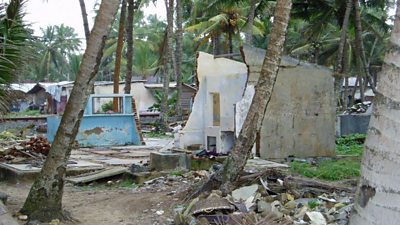
Disaster Coverage
A guide to covering disasters. -

Disaster Coverage - Health Aspects
A guide to health risks when visiting areas subject to natural or man-made disasters. -
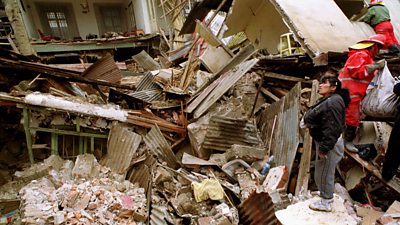
Earthquakes
A guide to working in areas affected by earthquakes. -
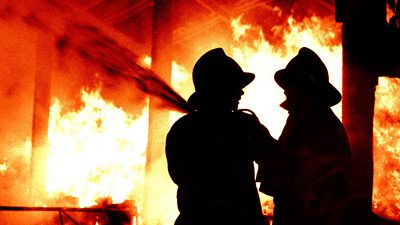
Fires - Buildings and Bushfires
A guide to deployments of journalists and crew to large building fires and bushfires. -
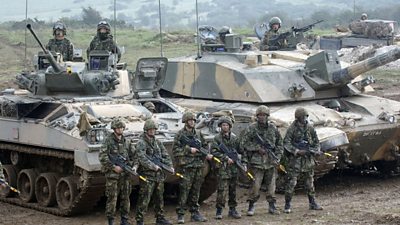
Hostile Environments
Hostile Environments and Travel Advisory information and Country List -
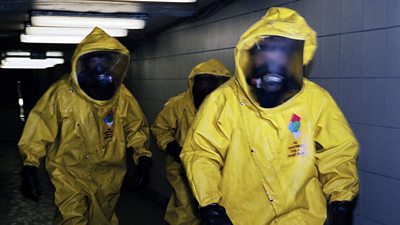
Industrial Spills and Chemical, Biological, Radiation Hazards
A guide to chemical, biological and radiation related hazards. -

Trauma and PTSD
A guide to dealing with trauma or a traumatic event. -
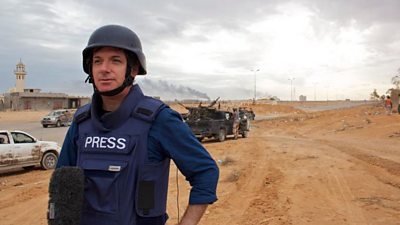
Safety Equipment Stores
Our safety equipment store details -
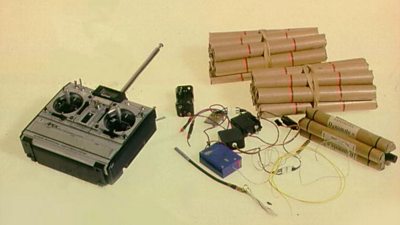
Terrorist Bomb Incidents
A guide to covering bomb story threats
More from SSR
-
Your platform to record accidents, risk assessments, assurance monitoring and inspections
-
Safety Equipment Stores
Just one number to call: 0844 800 8875 -
91�ȱ� Safety Guidelines
An A-Z of 91�ȱ�'s Health and Safety Guidelines -
Safety Advice Line: 0370 411 0464 Email: safety@bbc.co.uk
Events guidance - key links:
- Exhibitions
- General Guidance
- Indoor Location Recce Checklist
- Outdoor Location Recce Checklist
- Major Incidents & Emergency Planning
- Marketing and Promotional
- Noise Exposure
- Planning and Management
- Responsibilities
- Responsibilities Form
- Laser Lighting Effects
- Strobe Lighting
- Temporary Stages and Rostra
Health topics - key links:
- (91�ȱ� network only)
- Contributors Fitness to Participate
- Display Screen Equipment (DSE)
- (91�ȱ� network only)
- First Aid and Welfare on Location
- International Travel - Risks & Health
- Manual Handling
- Mental Health: 91�ȱ�page
- (91�ȱ� network only)
- Personal Health and Wellbeing
- Pregnancy
- Psychological Trauma Support & Trauma Risk Management (TRiM)
- Tiredness and Fatigue
- Travel Health Contacts
91�ȱ� High Risk - key links:
- CBRN and Industrial Spills
- Covert Filming
- Crisis Management and Security Support
- Demonstrations, Protests and Crowds
- Disaster Coverage
- Door Stepping
- (91�ȱ� network only)
- (91�ȱ� network only)
- Public Order
- Safety Equipment Stores
91�ȱ� Journalism - key links:
91�ȱ� Productions - key links:
- Aerial Filming and Airfields
- Animals: Displaying and handling for performance
- Boats: Working on
- Children and Young People
- Driving
- Electrical Equipment and Systems
- First Aid and Welfare on Location
- Food Safety (Cooking and Catering)
- Remote Location Working
- Roads and Streets: Working by
- Security of Productions on Location
- Stunts
- Tiredness and Fatigue
- Unmanned Aerial Systems (UAS aka Drones)
- Vehicles: Recording in, from and around
- Working at Height: Mobile Elevating Work Platforms
- Working at Height: Tower Scaffolds
91�ȱ� Radio - key links:
- (91�ȱ� Network only)
91�ȱ� Security - key links:
91�ȱ� Sport - key links:
About this site
This site describes what the 91�ȱ� does in relation to managing its health, safety and security risks and is intended for those who work directly for the 91�ȱ�.
It is not intended to provide instruction or guidance on how third parties should manage their risks. The 91�ȱ� cannot be held liable for how this information is interpreted or used by third parties, nor provide any assurance that adopting it would provide any measure of legal compliance. More information
Some links on this site are only accessible when connected to the 91�ȱ� network
